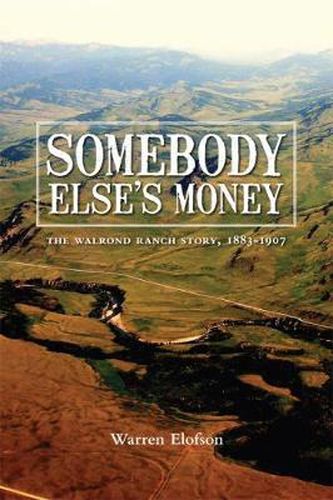Readings Newsletter
Become a Readings Member to make your shopping experience even easier.
Sign in or sign up for free!
You’re not far away from qualifying for FREE standard shipping within Australia
You’ve qualified for FREE standard shipping within Australia
The cart is loading…






This title is printed to order. This book may have been self-published. If so, we cannot guarantee the quality of the content. In the main most books will have gone through the editing process however some may not. We therefore suggest that you be aware of this before ordering this book. If in doubt check either the author or publisher’s details as we are unable to accept any returns unless they are faulty. Please contact us if you have any questions.
The Walrond Ranch, a cattle and horse operation in the foothills of southern Alberta, was one of the four giants of the livestock grazing industry in the late nineteenth and early twentieth century. At its height, the Walrond ran over 10,000 cattle along with several hundred well-bred Clydesdale and Shire horses on nearly 300,000 acres of land. Ultimately, however, the Walrond failed. The driving force behind the ranch, Dr. Duncan McNab McEachran, had high aspirations and communicated his optimism to Sir John Walrond and the rest of the British investors funding the venture. But reality quickly set in. Winter storms, drought, disease, and predators constantly depleted the Walrond’s herds and the operation inexorably slipped toward bankruptcy. McEachran’s poor management played just as large a role as the environmental challenges in the ranch’s downfall; his stubborn reluctance to admit failure prolonged the inevitable, wasting more and more investor dollars in the meantime. Somebody Else’s Money: The Walrond Ranch Story, 1883 1907, is the first close environmental and economic study of one of the so-called great ranches on the northern Great Plains of North America. Warren Elofson examines the business side of large-scale, open range grazing and describes the myriad of natural and man-made obstacles that barred it from success. He argues that, financially, the Walrond was doomed from the beginning because its management approach and grazing practices were unsuited to both the natural and economic conditions of the frontier environment.
$9.00 standard shipping within Australia
FREE standard shipping within Australia for orders over $100.00
Express & International shipping calculated at checkout
This title is printed to order. This book may have been self-published. If so, we cannot guarantee the quality of the content. In the main most books will have gone through the editing process however some may not. We therefore suggest that you be aware of this before ordering this book. If in doubt check either the author or publisher’s details as we are unable to accept any returns unless they are faulty. Please contact us if you have any questions.
The Walrond Ranch, a cattle and horse operation in the foothills of southern Alberta, was one of the four giants of the livestock grazing industry in the late nineteenth and early twentieth century. At its height, the Walrond ran over 10,000 cattle along with several hundred well-bred Clydesdale and Shire horses on nearly 300,000 acres of land. Ultimately, however, the Walrond failed. The driving force behind the ranch, Dr. Duncan McNab McEachran, had high aspirations and communicated his optimism to Sir John Walrond and the rest of the British investors funding the venture. But reality quickly set in. Winter storms, drought, disease, and predators constantly depleted the Walrond’s herds and the operation inexorably slipped toward bankruptcy. McEachran’s poor management played just as large a role as the environmental challenges in the ranch’s downfall; his stubborn reluctance to admit failure prolonged the inevitable, wasting more and more investor dollars in the meantime. Somebody Else’s Money: The Walrond Ranch Story, 1883 1907, is the first close environmental and economic study of one of the so-called great ranches on the northern Great Plains of North America. Warren Elofson examines the business side of large-scale, open range grazing and describes the myriad of natural and man-made obstacles that barred it from success. He argues that, financially, the Walrond was doomed from the beginning because its management approach and grazing practices were unsuited to both the natural and economic conditions of the frontier environment.